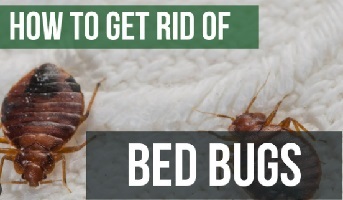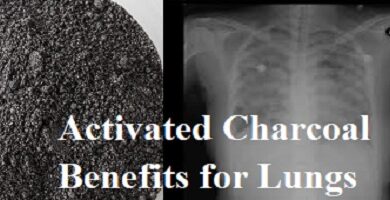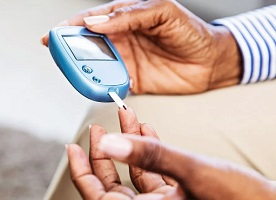How to Get Rid Of Bedbugs ~ Ultimate Guide 2023
How to Get Rid Of Bedbugs Ultimate Guide 2023

Bed bugs ~ No one wants to hear those two words. If you have a bed bug infestation, you want to know how to get rid of bed bugs quickly on your own, as is the case with most insects.
Whether you’ve discovered one in your house or apartment, on your luggage, or hiding in personal items, your initial response is probably to try to determine what quickly eliminates bed bugs.
You can start by attempting a chemical-free home treatment for bedbugs. High heat at 115°F (46.11°C) or extreme cold at 32°F (0°C) can easily kill these insects.
How to Get Rid Of Bedbugs
Here are a few strategies for completely eliminating bedbugs using these techniques:
- Wash clothing and linens for 30 minutes in hot water. After that, dry them for 30 minutes at the highest heat setting in a dryer.
- Steam mattresses, couches, and other areas where bedbugs hide with a steamer.
- Place contaminated items in black bags and leave them in a closed car or outside on a hot day that reaches 95°F (35°C). It can take 2 to 5 months to kill sealed-up bugs in cooler climates.
- Store bags containing bedbugs at 0°F (-17.78°C) in the freezer. Check the temperature using a thermometer. Keep them there for a minimum of 4 days.
Bed bugs are the last thing you want to think about each night before you go to bed.
Regrettably, bed bugs are pretty widespread.
Make the area uninhabitable for any remaining bedbugs after you’ve eliminated any that are visible.
Your mattress and box spring should be covered with bedbug-proof material. All the way up, zip these covers.
The trapped bugs inside will perish, and new bugs won’t be able to enter. You might need to try an insecticide if these techniques don’t completely get rid of the bugs.
How to Get Rid Of Bedbugs ~ Chemical and non-chemical treatments
Bedbugs can be removed from your home using insecticides.
Look for items that have been registered with the EPA in the United States and are designated for use on bedbugs.
You can try the following insecticide varieties:
- The most popular pesticides for killing bedbugs are pyrethrins and pyrethroids. Some bedbugs, though, have developed a resistance to them.
- Pyrroles, such as chlorfenapyr, kill bedbugs by causing cell disruption.
- Neonicotinoids are nicotine analogs. The nervous system of the bugs is harmed. These chemicals are effective against bedbugs that have developed a resistance to other pesticides.
- Desiccants are substances that remove the bugs’ outer layer of defense. The bugs would dry out and perish without this coating. Diatomaceous earth and silica aerogel (Tri-Die and CimeXa) are two examples of desiccants. Desiccants benefit from not developing resistance in bedbugs, but they work slowly. It may take a few months for these products to completely eradicate all bugs.
- Bedbugs can be killed by foggers or bug bombs, but they cannot reach the cracks and crevices where they hide. If used improperly, they may also be toxic to people. Analyze the label thoroughly. Don’t use a fogger until you have left the room.
- Plant oil-based products that target bedbugs, such as EcoRaider and Bed Bug Patrol, are less hazardous than chemical insecticides.
What are Bed Bugs?
Bedbugs are tiny, oblong, brownish insects that feed on human or animal blood.
The flat bodies of adult bedbugs are about the size of an apple seed. However, after eating, their bodies swell and take on a reddish hue.
Although they cannot fly, bedbugs are able to move quickly along floors, walls, and ceilings.
Over the course of their lifetime, female bedbugs can produce hundreds of eggs, each about the size of a dust speck.
Bedbug nymphs, or immature bedbugs, must consume blood before each of their five skin-shedding cycles in order to mature.
The bugs can produce three or more generations per year and reach full development in as little as a month under ideal circumstances.
Although annoying, it is not believed that they spread illnesses.
Wondering how to identify bed bugs?

These ugly insects are reddish-brown in appearance and range in size from 1mm to 7mm. They can go months without eating even though they are blood-dependent.
With a healthy female bed bug capable of producing up to 500 eggs throughout her lifespan, a major infestation can develop in a matter of weeks.
How to Check for Bed Bugs
Do your shoulders or legs have unexplained bites? Do your sheets suddenly have reddish-brown stains?
A careful examination and quick treatment can be the difference between an introduction and a severe infestation if you suspect bed bugs are to blame.
Instead of dealing with bed bugs in every nook and corner of your bedroom, find and treat a moderate bed insect infestation.
A moderate bed bug infestation, though, can be difficult to locate. You must be able to detect bedbugs.
Little, flat, oval-shaped insects are what bed bugs are. Adults resemble an apple seeds in both size and shape.
Although they are not known to carry diseases, they emerge from their hiding places during the day to eat humans who are at rest.
A bed bug measure between 6 to 9.5 mm in length and is small enough to be seen with the unaided eye. Normally brown in hue, bed bugs become bloated and red after a recent feeding. They have two antennae and six legs, just as other insects.
What Draws Bed Bugs to Your Residence?
Many people think bed bugs prefer filthy environments and are drawn to it. This is the reason why many people think that staying in a budget hotel will guarantee bed bugs.
Yet as it turns out, that’s just a widespread misunderstanding.
It’s not dirt or decay that attracts bed bugs. They can actually survive everywhere as long as they have access to the one resource they require to stay alive:
- Despite being blood-feeding insects like mosquitoes and ticks, bed bugs cannot fly or dwell on their hosts.
Instead, they must wait for a meal to become available to them while hiding close to their food supply.
Because of this, bed bugs are quite adaptable. As long as they have access to regular blood meals, they can live anywhere, whether on the sofa cushions or the carpet of a library.
That’s why if your flat has bed bugs.
In light of it, the following are some major bed bug causes:
- Buying secondhand furniture and bringing it home. Bed bugs can get into your home through luggage, handbags, backpacks, secondhand couches, and other items.
- Cross-contamination in a setting with multiple units. In hotels and apartment buildings, bed bugs can spread from one room to another.
- A hotel, resort, or hostel’s contamination. You can bring bed bugs home with you in your clothing or luggage.
- Visitors staying in your house. Visitors may unknowingly bring bed bugs into your home while staying there.
What Indicates Your House Has a Bed Bug Infestation?
The last thing you want to consider each night before going to sleep is bed bugs.
Bed bugs, regrettably, are pretty widespread.
Bed bugs are typically no bigger than the tip of a pen, making them initially difficult to detect. If you suspect a bed insect infestation, watch out for these symptoms:
- Indicators of the actual bugs, such as shed skins or dark droppings in mattress seams or other places
- Bites, welts, or lumps on your body when you first get out of bed in the morning.
- Minute blood streaks on your pillows or bed sheets.
- A disagreeable musty stench in your room or near your bed that some claim has a “locker room scent.”
The realization that you have bed bugs can be frightening, but the first step in treating them is to identify them.
How to Get Rid Of Bedbugs ~ The 5 Ways to Get Rid of Bed Bugs Right Away
It’s imperative to take action as soon as a bed bug infestation is discovered. To get rid of the pests, use the following actions:
- Locate regions that are infected
Since bed bugs breed quickly, it’s critical to locate them as soon as possible. In light of this, look out for bed bug indications in the regions listed below:
- Your mattress and box spring seams.
- Defects in the headboard and bed frame.
- Your sofa’s cushion seams and the spaces in between the cushions.
- At the joints of furniture like sofas, accent chairs, and futons.
- In the carpet seam where the carpet meets the wall.
Using a flashlight, thoroughly inspect each area. Check for a minute, rust- or dark-colored droppings, bedbugs that are alive, or tiny, pale-yellow eggs.
You should also inspect your nightstand, dresser drawers, and closet if you notice any indications of bedbugs in any of these locations.
- Contain the Bugs
Once you’ve located an active bed bug infestation, you must keep it under control to prevent further spread. Vacuuming up live bed bugs is one quick and simple method of containing them.
- To get rid of live bedbugs, completely vacuum your mattress, your dresser’s interior, the furniture’s seams and joints, your carpets, and any other areas where you’ve seen bed bug infestation symptoms.
- After you’re done, place the vacuum canister’s contents in a plastic bag and dispose of it.
- After vacuuming the entire affected area, wash and dry the contaminated fabrics in hot water with a high heat setting in your dryer.
If you are unable to wash and dry an item (such as a couch cushion), bed bugs can be killed using steam.
Remember that approach will only collect live bed bugs and not eradicate the bed bug problem.
If eggs are left behind, they can still hatch and result in a subsequent invasion.
- Destroy the Bed Bugs
It’s finally time to permanently eradicate bed bugs. This is how:
3 Natural Home Remedies
- Use heat or cold to naturally get rid of bed bugs
Bed bugs can be eliminated from a mattress or other key regions using temperature.
Then, grab any contaminated bedding or clothing and wash it in really hot water for 30 minutes.
After the wash cycle is over, dry the items for at least 30 minutes in your dryer using the maximum heat setting.
You could also place the impacted goods in a freezer that is at least 0 degrees Fahrenheit. In order to ensure that all bed bugs are dead, leave them there for four days.
Positives: Safe, simple, and efficient
Cons: Not applicable to all objects or substances
- Apply steam
- Proof that insects exist, such as shed skins or dark droppings in mattress seams or other places.
- Bites, welts, or lumps appear on your body as soon as you get out of bed in the morning.
- Miniscule blood streaks on your bed sheets or pillowcases.
- A repulsive musty stench in your room or around your bed that some people liken to “locker room smell.”
Even though discovering you have bed bugs can be frightening, locating them is the first step in treating them.
Five actions you can take right away to get rid of bed bugs
When you discover a bed insect infestation, you must take action. To get rid of the pests, follow these steps:
Find infected locations as the first step.
Since bed bugs breed quickly, it’s critical to locate them as soon as possible. In light of this, look out for bed bug indications in the regions listed below:
- Your mattress and box spring seams.
- Defects in the headboard and bed frame.
- Your sofa’s cushion seams and the spaces in between the cushions.
- At the point where your carpets meet the wall, along the carpet seam.
- In the furniture’s joints, such as those of couches, armchairs, and futons.
Using a flashlight, thoroughly inspect each area. Check for a minute, rust- or dark-colored droppings, bedbugs that are alive, or tiny, pale-yellow eggs.
You should also inspect your nightstand, dresser drawers, and closet if you notice any indications of bedbugs in any of these locations.
- Cover bed frames
Buy covers for your mattress and box spring that are bed bug resistant.
These coverings destroy bed bugs that are caught inside and prevent bed bugs from entering when the zipper is fully closed.
Also, they create a defense that stops bed bugs from attacking you while you sleep.
Pros
Efficient, inexpensive, non-toxic, and easy
Cons
Does not eliminate mattress-based bed bugs.
Home remedies to get rid of bed bugs
~ Three traditional bed bug remedies
- Use a pesticide
- Use an insect bomb
- Keep an eye on the impacted areas.
How to Get Rid Of Bedbugs ~ How Can Pest Control Experts Get Rid of Bed Bugs?
You can call a seasoned exterminator like Smith’s if DIY bed bug management is not an option.
The procedures to get rid of bed bugs are as follows:
- Examine the property and create a management strategy
We begin each pest control project with an examination and advice. We start by doing bed bug and identification inspections in the areas of your house and property that have been affected.
Our technicians will create a management plan to eradicate the bed bugs permanently based on the results of that inspection.
We’ll also talk to you about the price of bed bug treatment so you can plan for extermination.
- Apply therapy
The actual treatment for your bed bug infestation will then begin by our pest control specialists.
We provide a range of bed bug treatment choices, such as the following:
- Heat Therapy
For significant infestations in residences or hotels, heat treatment is ideal. The entire infestation will be eliminated with just one application of these non-toxic remedies, which are also safe for both people and dogs.
We increase the interior temperature of your home during heat treatments to a point where bed bugs cannot thrive.
This technique kills bed bugs on couches and other difficult-to-reach areas since it also penetrates walls.
- Steam Therapy
Although it operates on a smaller scale, steam treatment is comparable to heat treatment.
These remedies work well for consumers who seek a non-toxic cure and for less severe infestations.
- Chemical Therapy
For mild infestations that are discovered early or for infestations that need spot treatment, chemical treatments are helpful.
To completely eradicate bed bugs, these treatments frequently necessitate one to two follow-up visits.
- Prevention Techniques
We provide bed insect prevention tools like mattress encasements to assist you in avoiding bed bug infestations.
Preventative measures, when combined with other techniques, can help keep bed bugs out of your homes.
Can Bed Bugs Resist Treatment?
Adult bed bugs are not resistant to expert elimination. Yet, it’s crucial to remember that bed bug eggs aren’t always destroyed by elimination.
As a result, we advise having routine bed bug checks following the initial elimination procedure.
Newly hatched bed bugs will be located during these inspections, and any additional treatments required to get rid of them will be given.
How Much Do Bed Bugs Cost to Get Rid of?
Depending on the technique employed and the extent of the infestation, the average price of bed bug removal varies.
A thorough bed bug removal would typically cost clients between $300 and $5,000, with an average price of $1,750.
Due to the fact that bed bugs may survive without food for an extended period of time (up to 400 days) and are frequently challenging to eradicate, bed bug extermination costs are higher than those of other pests, such as fleas.
How to Prevent Bed Bugs in Your House
Preventing an infestation is always easier than dealing with it later when it comes to pest management.
In light of this, the following tips will help you prevent bed bugs from entering your home:
- Be watchful to avoid bed bugs getting on your clothes. Keep your suitcase off the ground when staying at a hotel by placing it on a stand. When you get home, wash every piece of clothing you have and dry it in a hot dryer.
- Use caution while purchasing old furniture. Before bringing any new or secondhand furniture inside, give it a thorough inspection. Look at the seams, joints, tufts, and below any cushions.
- To stop bedbugs from getting into the fabrics, buy a plastic or hypoallergenic cover for your mattress, box springs, and furniture.
- Clear your home of any clutter that bed bugs can use to conceal themselves. The floor should be cleared of papers, magazines, clothing, and other belongings, and nightstands and drawers should be cleaned frequently.
- Regularly vacuum your floors and mattress. Wash all linens, clothing, and textiles in hot water at least once each week.
- To prevent bed bugs from hiding in cracks around baseboards, electrical outlets, light sockets, and furniture, caulk should be used to fill them.
- Before staying in a hotel, hostel, or guest room, look for bed bugs.
FAQs
What permanently kills bed bugs instantly?
Result for bedbug removal – comprehensive guide 2023
Steam – At 122°F (50°C), bed bugs and their eggs perish. Bed bugs are instantly killed by the steam’s 212°F (100°C) high temperature.
Slowly apply steam to mattress folds and tufts, sofa seams, bed frames, and any corners or edges where bed bugs might be hiding.
What is the absolute best way to get rid of bed bugs?
For 30 minutes, wash your clothes and bedding in hot water. After that, dry them for 30 minutes at the highest heat setting on a dryer.
Mattresses, couches, and other areas where bedbugs hide should all be steam cleaned. On a hot day that reaches 95°F (35°C), pack infected objects in black bags and leaves them outside or in a closed car.
What kills bed bugs automatically?
Bed bugs exposed to 113°F for 90 minutes or longer will perish if the temperature is maintained.
Nevertheless, if exposed to 118°F, they will perish in just 20 minutes. It’s interesting to note that bed bug eggs must be exposed to 118°F for 90 minutes in order to die out completely.
What home remedy kills bed bugs instantly?
Rubbing alcohol is one of the most well-liked and efficient DIY home remedies for bed bugs.
You can simply spray the affected regions with a diluted solution that has been placed in a spray bottle.
The bed bugs will be almost instantly killed by the alcohol. It also leaves no residue or offensive odors and disappears rapidly.
- How to get rid of bedbug bites overnight
Bedbug bites can be treated by a pharmacist.
- Hydrocortisone cream, a mild steroid cream, to treat bedbug bites (children under 10 and pregnant women should get advice from a doctor before using hydrocortisone cream)
- Antihistamines ~ if the bites are extremely itchy and you can’t fall asleep, these medications may help.
How to eradicate bed bugs forever ~ How to Get Rid Of Bedbugs
However, there are some additional steps you can take to effectively and permanently rid your home of bed bugs.
- Keep an eye out for early signs of infestation.
- Clean all of your textiles.
- Thoroughly wash your mattress.
- Patch up wall fissures.
- Organize Your Home.
- Seal anything that cannot be cleaned.
- Regularly steam clean.
- Find a Pest Control Service in Barrie.
How to get rid of bedbugs in one day
Treatment with heat treatment could be an excellent choice for you if quickly eliminating bed bugs is your main concern.
A certified pest control company can use heat treatments to eradicate bed bugs in a single day. The temperature in the impacted space ranges from 135°F (57.2°C) to 145°F (62.7 °C).
How long does it actually take to get rid of bed bugs realistically? How to Get Rid Of Bedbugs
Depending on the severity of the infestation and the size of the home, bed bug removal typically requires 2-4 treatment sessions spread out over a period of 3-6 weeks. But every circumstance is different.
How to get rid of bed bugs without an exterminator ~ 3 Natural Home Remedies
- Get rid of bed bugs naturally with heat or cold. Temperature is an effective way to get rid of bed bugs in a mattress or other important area
- Use steam
- Cover mattresses.
- Use an insecticide
- Use a desiccant.
- Deploy a bug bomb
What substance exterminates bed bugs and their eggs? What chemical eradicates bed bugs and their eggs forever?
Insecticides made of synthetic chemicals called pyrethroids behave similarly to pyrethrins.
Both substances are deadly to bed bugs and can kill them by forcing them out of their hiding places.
What causes bed bugs to die? How to Get Rid Of Bedbugs
When their body temperature reaches 45° Celsius, or 113° Fahrenheit, bed bugs die.
Exposing the bugs for an hour to temperatures higher than these can kill all stages.
All bed bugs are quickly killed at temperatures above 60°C (140°F).
What to look for when searching for bed bugs ~ How to Get Rid Of Bedbugs
- A musty, sweet smell. Deepen your breath.
- Blood stains on pillows, mattresses, or upholstered pieces of furniture like couches and headboards. Check your bedding, including your blankets, sheets, and mattress pads, before checking your mattress and box spring.
- Exoskeletons
- Miniscule, blackish flecks.
- Eggs


